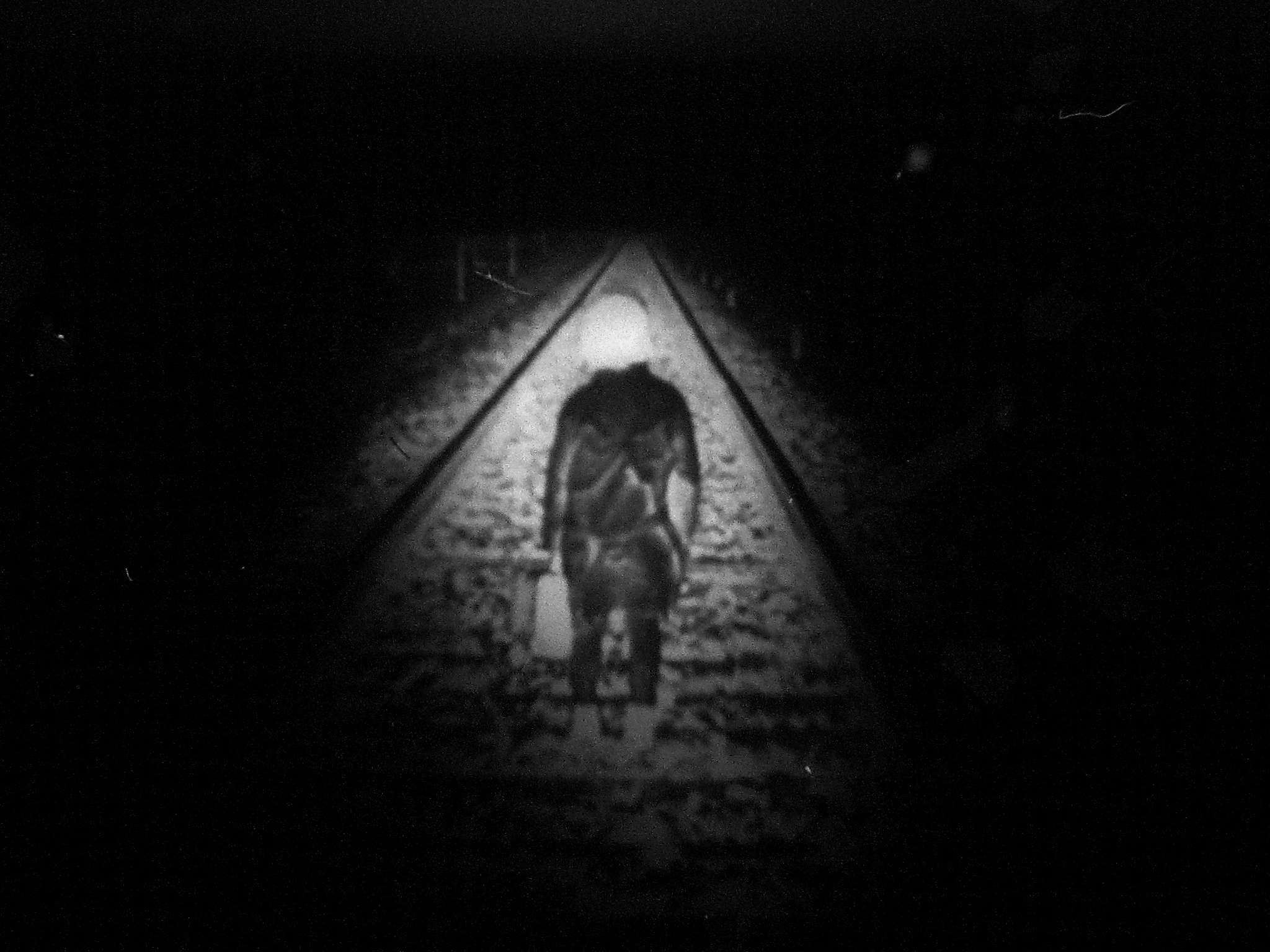
L’Arrivée is Tscherkassky's second hommage to the Lumiére-brothers. First you see the arrival of the film itself, which shows the arrival of a train at a station. But that train collides with a second train, causing a violent crash, which leads us to an unexpected third arrival, the arrival of a beautiful woman – the happy-end. Reduced to two minutes L’Arrivée gives a brief, but exact summary of what cinematography (after its arrival with Lumiéres train) has made into an enduring presence of our visual enviroment: violence, emotions. Or, as an anonymous american housewife (cited by T. W. Adorno) used to describe Hollywood's version of life: “Getting into trouble and out of it again.”
“L’Arrivée from Peter Tscherkassky is difficult to grasp and describe but exciting. It appears as if the film with the depicted train has to work its way across the screen with a great deal of effort. It literally shivers its way into the picture as if it had been incorrectly fed into the projector and was forced to do a dance in order to be seen properly. Even viewers well-versed in avant-garde film are subjected to a few minutes of distraction and breathless expectation. And not because narrative cinema has been subverted for the umpteenth time, but because a sensual experience of delayed perception really is on offer here. A storm of material follows and then Catherine Deneuve descends from the train and falls in to the embrace of an approaching man. L’Arrivée is an apparently simple experience, and perhaps more exciting, sensual and intellectual because of that simplicity.”
Christian Cargnelli1
“A white screen. Tabula rasa. Panavision. L’Arrivée shines on you like pure projected light, like the white surface still waiting for the marks of the film maker. In L’Arrivée, Peter Tscherkassky goes back to the beginning, back to lumière and the Lumières who, once upon a time, made a film of a train arriving. And then the dirt begins to invade, the "story", if you like. A frenzy in the soundtrack – it bangs, creaks, crackles and roars. From the right a grey veil approaches: the perforation of a strip of film. L’Arrivée makes cinema from mistakes, from derailments. Half pictures – the misty pictures of a grey delegation in station somewhere – penetrate the white surface. From right and left they run together, crash into each other and strive to separate themselves again. The material comes from Mayerling (1968), a Habsburger melodrama from the British director Terence Young. The Eastman colour which was originally present has been exorcised by the film maker. What Tscherkassky does here is drastically re-configure in CinemaScope. A train arrives and collides with its mirror image. Events begin to turn head over heels. Tscherkassky hystericalises the images. He allows them to lose their certainty, crosses soundtrack with perforation strip, changes positive to negative, slits the material open. Inside out and upside down. Phantom images – behind the veil of a film still running amok as if in the grip of a panicking collaborative cinematographic machine. A film star staggers into the final kiss – Catherine Deneuve alights, a man (Omar Sharif – which sounds like j'arrive) hurries towards her. A kiss. Bliss. An end. L’Arrivée is a film in the process of approaching. An orchestrated melodrama of dislocated viewing values made whith sheer pleasure in disaster.”
Stefan Grissemann2
“Just as the record player needle has to find the right groove, L’Arrivée has to settle into the perforation tracks before the narrative line can develop. A train arrives in a station where a hand-instigated collision with another train takes place. The event is not just a depiction, but a battle of the material itself. This is not the end, but the transition to a kiss, to the Happy End. L’Arrivée demonstrates where cinema begins – with the spectacular, and where it ends – with intimacy.”
Bert Rebhandl3
- 1Christian Cargnelli, http://www.tscherkassky.at.
- 2Stefan Grissemann, http://www.tscherkassky.at.
- 3Bert Rebhandl, http://www.tscherkassky.at.

